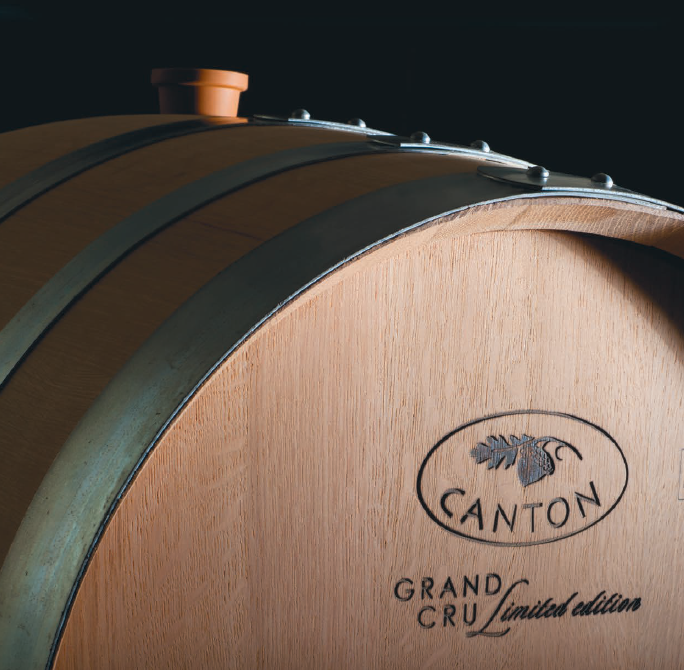
This is a topic I am currently studying and I thought it would make for a great post.
Whiskey maturation is an art shaped by many variables, but few are as foundational as the way oak staves are prepared before a barrel is ever assembled. One of the most significant—yet often overlooked—stages is the seasoning of American white oak (Quercus alba). This process affects the flavor, aroma, and aging potential of the whiskey it houses. Here we explore two principal approaches: open-air seasoning and kiln drying. Each method has implications for the chemical composition of the oak and, ultimately, the whiskey’s complexity.
Methods of Seasoning: Air-Drying Versus Kiln-Drying
Open-air seasoning, a traditional method, involves stacking sawn staves outdoors and leaving them exposed to natural elements for 12 to 36 months. Some cooperages take it even further by seasoning their staves for 60 months or longer. Over time, sun, wind, and rainfall slowly reduce the wood’s moisture content while encouraging biological activity—especially fungi—that gently alter the oak’s structure and extractive profile. This process leaches out bitter tannins and volatile green compounds, yielding a mellower, more aromatic wood. It also promotes a more even internal drying pattern, reducing the risk of internal stresses and ensuring better cooperage performance.
By contrast, kiln drying rapidly removes moisture by exposing staves to controlled heat and airflow over a few weeks. While efficient, this method primarily serves to dehydrate the wood and does not provide the same opportunity for microbial and enzymatic changes. As a result, kiln-dried oak often retains harsher compounds and lacks the nuanced aromatic precursors developed in naturally seasoned wood. It may be suitable for rapid production environments but often results in barrels that need longer spirit maturation to reach balance.
Why Natural Seasoning is Preferable
Natural seasoning goes beyond simple drying. It subtly reshapes the internal chemistry of oak staves. Rain helps flush out water-soluble tannins and resins, while oxidative processes and microbial activity break down lignin and hemicellulose, forming compounds such as vanillin and furfural—key contributors to whiskey’s vanilla and caramel notes. The result is wood that not only smells less sappy or green but also enhances the whiskey’s aromatic profile in a more balanced way.
Extended seasoning also enhances the extraction rate of flavor-active compounds during barrel aging. With harsh elements reduced and beneficial compounds enriched, the interaction between spirit and oak is more harmonious. This promotes a more integrated oak character in the final spirit, often reducing the need for lengthy aging just to soften the wood influence. In essence, the barrel becomes a partner in maturation, rather than an obstacle to overcome.
Kiln drying, though practical for large-scale production, limits these developments. The accelerated timeline prevents sufficient breakdown of unwanted compounds, often resulting in a barrel that contributes sharper, woodier, or more resinous notes to the final spirit. For distillers who prioritize smoothness and depth of character, naturally seasoned oak is consistently the preferred option.
Impact on Whiskey Flavor
Several studies and industry observations confirm that barrels made from air-seasoned oak deliver a more refined whiskey profile. Aromatics such as vanillin, lactones (which give coconut and woody notes), and spicy phenols like eugenol are more prominent in spirits aged in well-seasoned barrels. Simultaneously, undesirable attributes—such as bitterness or “green” wood flavors—are markedly reduced.
Furthermore, the duration of seasoning matters. Staves aged for 18 to 36 months show more significant reductions in astringency and increases in flavor-active compounds than those seasoned for shorter periods. Many premium producers and cooperages offer extended seasoning times specifically to achieve these results. A whiskey aged in such barrels often displays smoother mouthfeel, greater aromatic complexity, and an integrated oak character—even at a younger age.
For consumers, the difference can be notable in the glass. Spirits matured in naturally seasoned barrels often exhibit a layered complexity—vanilla, sweet spice, toasted almond, and coconut—balanced by a soft oak backbone. In contrast, whiskey aged in barrels made from kiln-dried oak may require additional time in the warehouse to mellow out sharp or green notes. For blenders, this also translates into greater versatility when selecting casks for bottling.
Barrel Construction and Structural Integrity
Besides flavor development, air seasoning improves stave stability. Gradual drying reduces the risk of warping or splitting during cooperage and long-term use. This ensures not just a better tasting whiskey but a more reliable barrel—essential for producers filling thousands of casks each year. Kiln drying, in comparison, can induce internal stresses due to rapid moisture loss, leading to increased barrel maintenance and inconsistency.
The structural integrity of a barrel is crucial for long-term maturation. A cracked or leaky stave can compromise an entire batch. Air-seasoned wood, with its more uniform moisture gradient and fewer internal defects, often results in barrels with greater longevity. For distilleries aging whiskey for decades, these qualities are not just convenient—they’re essential.
Comes down to cost
The choice between air seasoning and kiln drying is a balance between cost, time and quality. While kiln drying offers speed, air seasoning offers transformation. For whiskey producers seeking complexity, elegance, and a clean oak signature, naturally seasoned American oak barrels remain the gold standard. The extra months spent under open skies are ultimately rewarded in the glass—through smoother textures, fuller aromas, and a more harmonious whiskey.
The growing trend among premium distillers to demand extended seasoning underscores the value of patience in cooperage. As whiskey consumers become more educated about what goes into their spirits, understanding oak seasoning adds another layer to appreciating the craftsmanship in each bottle. The next time you raise a glass, take a moment to consider not just the spirit inside—but the years the wood spent preparing for its role.
Cheers!
Sources consulted for technical background and chemical composition references:
- Independent Stave Company (2022). Oak Seasoning and Maturation White Papers.
- Missouri University Extension. White Oak and Barrel-Making Research.
- James Swan et al. (2008). Oak Maturation in Whisky. Scotch Whisky Research Institute.
- Wine & Spirits Education Trust (WSET) Diploma Studies.
- Distillery Trail: Understanding Oak and Barrel Flavor Contributions.
- Whisky Magazine, Issue 132: Cooperage Practices and Flavor Development.
